Blog
Innovators Profile
Still Life with Chip Tate
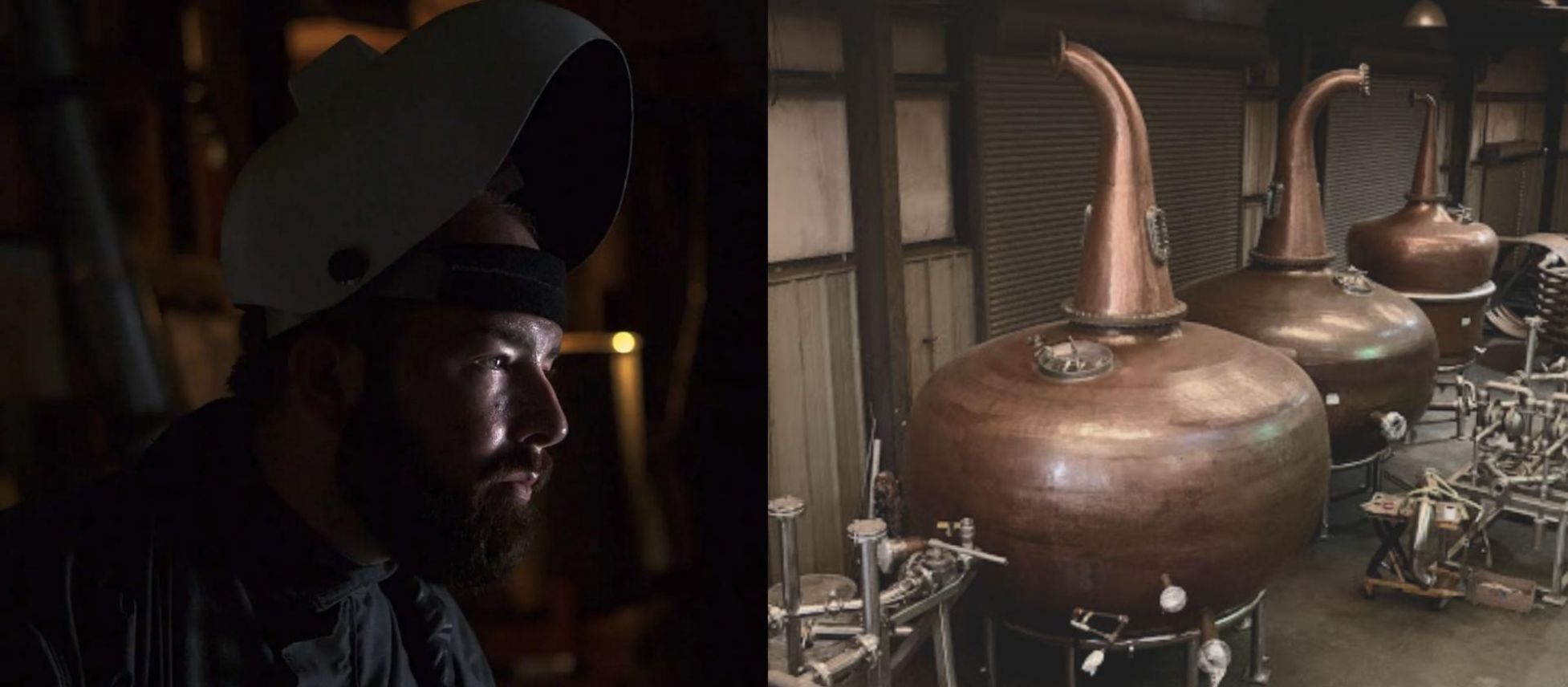
What has Chip Tate done in the whiskey world to earn his titles ‘Bad Boy’ of Whiskey and ‘Booze Rebel’?
Chip Tate has been making whiskey for a long time. He has experimented with every little aspect of whiskey creation. Here, we talk to him about his namesake Tate & Co. Distillery, and what he is creating here.
What have you done in the world of whiskey to earn the titles of ‘Bad Boy’ of Whiskey by some and a ‘Booze Rebel’ by Playboy Magazine?
That's a great question I ask myself from time to time. I can tell you that if I had such a reputation years ago, I would have dated more. But kidding aside, I think that I am recognized as a maverick in the spirits business for pushing and stretching category boundaries. As an artist, I have always found the most inspiration in taking what has come before in the tradition and taking it a creative step further. For instance, corn whisky has long been made in the US, and obviously, bourbon is an American classic that's predominately made from corn. But I took that concept in a different and more novel direction by using rich native corn and pot stills to create a whisky profile more focused on the corn and its rich flavors, than the barrel. It seemed like a natural complement to the styles that came before while taking the concept and profile of corn whisky in a totally different direction. I like to do that with all the categories with which I work in hopes of adding something new and creative to the narrative. So, I guess I'm a "bad boy" and "rebel" in that I like to push and expand categories and historical expressions in new directions. We have a number of exciting new projects planned to continue to expand my personal repertoire of spirits and ingredients
Tell us more about Tate & Co. Distillery as a brand and as a product: the origin of the name, and milestones in the brand development…
Tate & Company is still very much an unfolding project and brand since we are building out the property. On a conceptual level, however, Tate & Company is about a collaborative effort between dedicated craftsman and artisan distillers to create a larger craft distillery capable of producing whiskies - not only for my own brands and purposes - but also to produce spirits for other craft distillers. I have spent years designing and building the stills and equipment, along with the team at Tate & Company. We've built four big, beautiful pot stills with a number of unique features that will allow us to produce some of the best spirits in America. The next major step for us will be to find the financial partners necessary to finish out the distillery and put us in production.
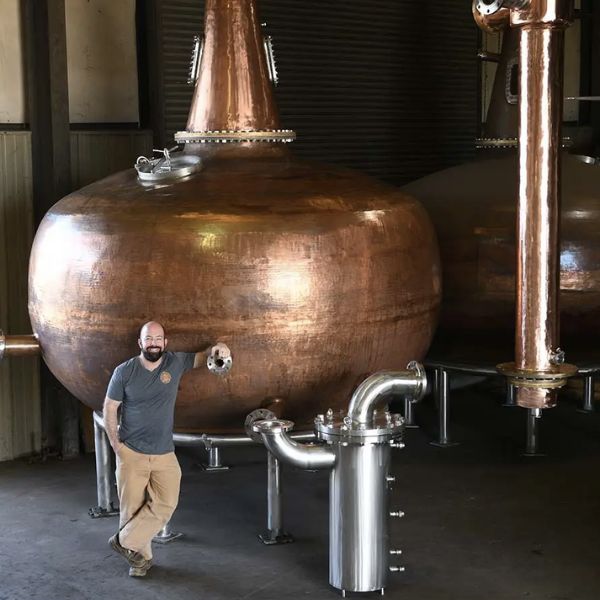
Image: Chip Tate standing in front of his self-crafted copper pot still; Source: Tate & Co. Distillery
Talk to us about the process of making your own stills, what this entails and what effect this has on the spirits you distill.
Stills affect the character of the whisky they make just as much as the shape of an aeroplane affects how it flies. Nothing has taught me this more keenly than being both a distiller and a still maker. The iterative learning process of making stills in between making whisky on the same stills has shaped and refined not only what I value most in a still, but in particular, influenced what aspects of a still's performance I most want to be able to control.
Making the stills for Tate & Company has been an amazing journey in itself in a number of ways as well. Having built the first set of stills at Balcones, I had some experience making stills. But, the stills we have built at Tate & Company are about ten times bigger than the stills I had built before. So, to facilitate building 2500 pot stills from 16mm copper, we had to begin by building proper copperworks with a host of equipment that had not been necessary before--an overhead crane, bending machines, big torches, ... all the fully professional equipment. Building the copperworks occupied the first year of our work and then the process of still building began. And while we've certainly learned many lessons since 2015, I am very proud of the work we have turned out and feel like we have some truly special and beautiful tools with which to distill.
What is unique about the stills you are making at Chip Tate Craft Copperworks?
As I mentioned, I think there is an important synergy of understanding that I've been able to develop being both a distiller and a still maker. For example, my spirit stills have two steam jackets, one on the bottom and another on the sides. Any manufacturer can tell you the downside to this is that a single larger jacket would provide the same heating and would be easier to make and install. However, I chose to do two jackets so that I can control not only the heating level but also where the still is being heated. As a distiller, I wanted to be able to control the heat in this way to make the still perform differently at different points during the distillation. Pot stills have always been a passion for me, as well as the spirits they produce.
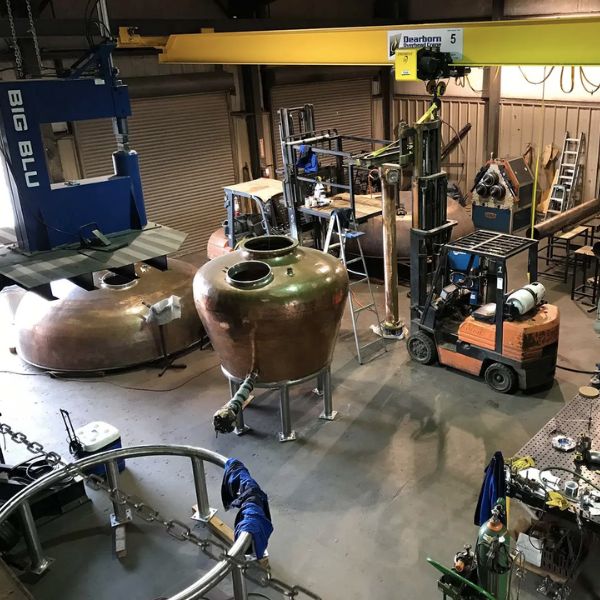
Image: A view from Chip Tate Craft Copperworks; Source: Tate & Co. Distillery
When I design a still, I try to understand the character and profile of spirits that the distiller most wants to be able to control and produce consistently. From that point, the design still unfolds around those performance characteristics most important to the user. It's like designing a race car to be the ideal fit for a particular driver and course. There is an art to it, but a great deal of the considerations that come into play just fall out of a full understanding of what performance is desired and how to manipulate the still design accordingly.
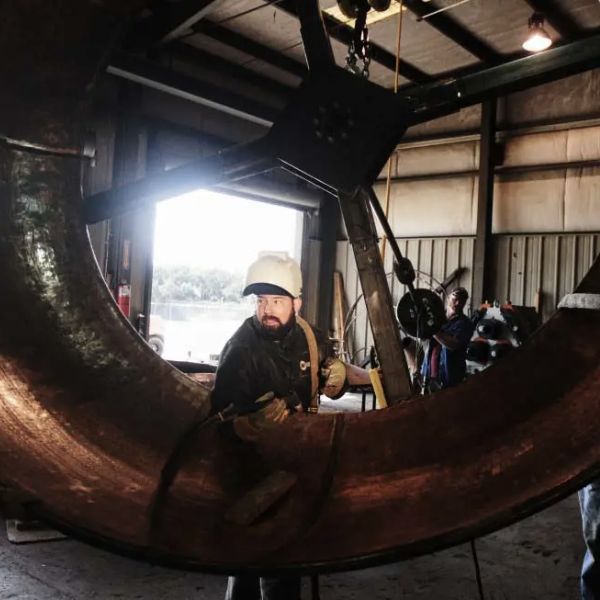
What are you currently distilling?
We cannot distil onsite until completing the distillery, as I mentioned. But we are hoping to be in production in the near future.
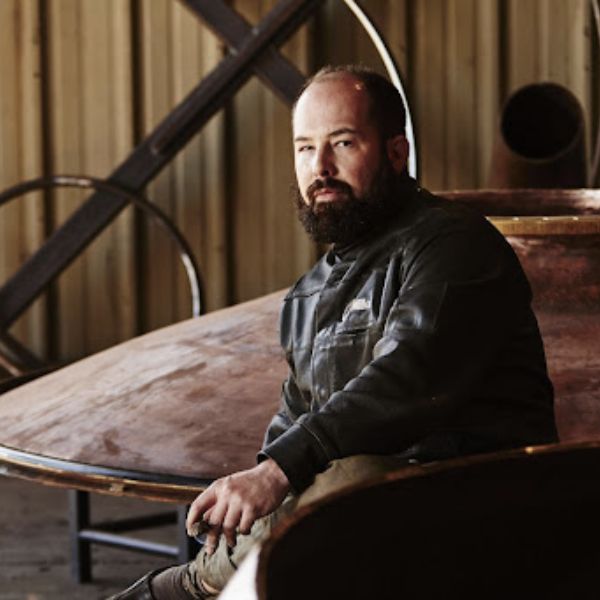
How do you source grains for your mash bill?
We intend to source ingredients from a number of sources and locations, but I always prefer to get as close to the grower as possible.
What is your ideal mash bill?
That's a hard one. It depends on what I'm making. Some whiskies are quite straightforward--for instance, using 100% malted barley in my single malt. But, I do have more intricate (and even slightly secret) recipes for bourbon or rye. I will say that I like using layers of grains and flavors through, using as many as a dozen different grains and malts in some whiskies, like rye malt whisky. It really varies according to whether I'm trying to emphasize the singular or construct a more elaborate and multi-tiered layer of flavors.
How do you choose a yeast variety for your product?
I actually often select yeasts to use in teams, several in a single fermentation. Some yeasts have wonderfully delicate ester profiles but struggle during the fermentation of higher gravity washes. Other yeasts are more tolerant and hardy but lack the character of their more delicate accomplices. Together, however, those two yeasts can form a strong team to ensure both a strong healthy fermentation as well as producing a more refined aroma.
[[relatedPurchasesItems-62]]
Take us through your process of blending.
I do blending in multiple stages. The first part comes early in the maturation process. I like to nose each barrel as it is maturing, probably every 6 months or so, to make sure that the cask in which it is maturing is serving and shaping the spirit well. Spirits are raised, as they say, and this early evaluation is key, in my experience, to keeping maturation going in the direction the distiller intends. In the end, the final blending process is really about creating a layered and harmonious blend of flavors. The ideal blend should be more complex and harmonious than the individual barrels that make it up. That is a hard standard to meet in all cases, but I believe the principle holds true all the same. The goal of the blender is not to mask the faults or shortcomings of individual casks but to create a symphony of barrels that, together, exemplify the character of the intended blend in a more complex way than individual casks might.
How do you create complexity in the fermentation stage?
The selection of yeast is key, as mentioned, but proper treatment of that yeast during fermentation is equally important. Adequately oxygenated wort and ample yeast pitching are certainly important, but allowing cooler longer fermentations will also produce more complex and aromatic washes for distillation. Fermentation should be measured in days, not hours, for best results.
What is the current distillery production capacity in gallons?
Once completed, our current still house should have a capacity of 384,250 gallons of barreled spirits per year.
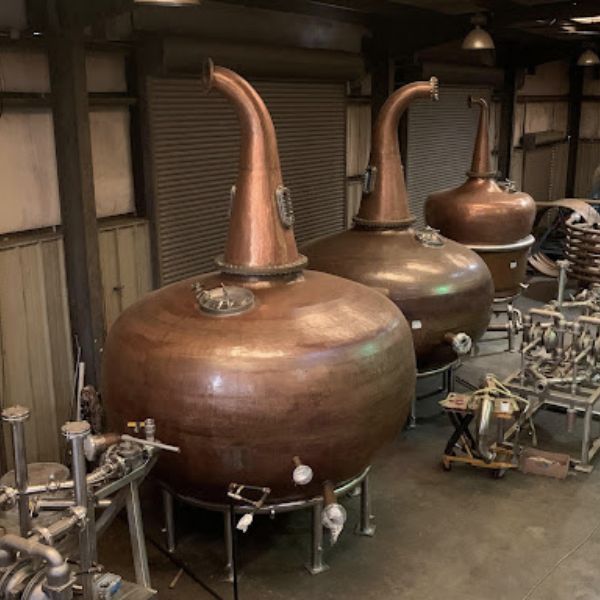
What are your goals for the distillery?
I hope Tate & Company can be a place where craft and artisan spirits can thrive on a larger scale. Most medium and larger distilleries focus on column stills to create their spirits. I feel like there is a well-deserved place for pot-distilled spirits and the rich character they bring to the table, as well. It's a big project to bite off, but I'm very hopeful that we will be able to finish capitalizing on the distillery in the near future and put all of our hard labor in still making and distillery design to good use.
How do you focus on sustainability while creating your spirits?
Efficient uses of ingredients, power and water have always been a focus for me in distillery design. It takes a more thoughtful, and sometimes more complicated, plant design to get both quality and efficiency, but it is essential to a well-designed distillery plan. I think it's also very important to make sustainable choices when it comes to farming the ingredients we use. Many of my spirits are based around heirlooms and organically farmed ingredients whenever possible.
Tell us more about your book, The New Single Malt Whiskey.
While I did write the foreword, I'm afraid I cannot take credit for that fine book. Carlo DeVito and I are longtime whisky friends and he invited me to do the foreword because of my history in American Single Malt.
What is your favorite music and what drink goes with it?
I have a number of favorites, but I do listen to and play a lot of blues guitar. And I don't need to tell anyone how perfectly blues and whisky match.
In conversation with Malvika Patel, Editor and VP, Beverage Trade Network
If you're a bulk wine or bulk spirits supplier, contract bottler, or private label producer aiming to connect with serious trade buyers, IBWSS San Francisco is the event you can't afford to miss. Get a quotation or Book a exhibitor table.

